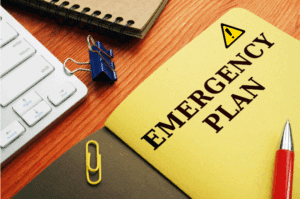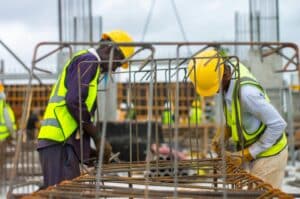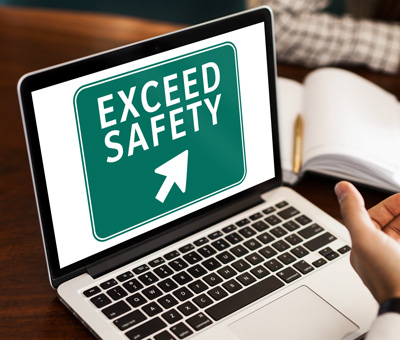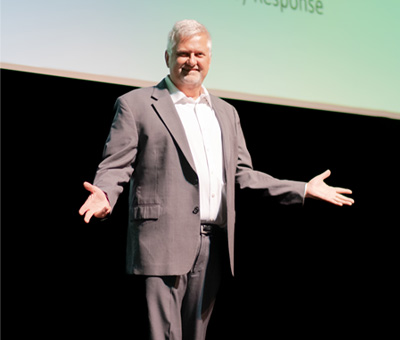Americans are more unhealthy than ever before in history. The CDC reports that heart disease is the leading cause of death and the obesity rate is now exceeding 48% of the population. These statistics are staggering; but the good news is that we all have the power to change, to make healthier choices that lead to mental, physical, and emotional longevity and vitality.
In today’s fast-paced world, the pursuit of a healthy lifestyle has become more crucial than ever. Beyond its impact on personal well-being, adopting a healthy lifestyle extends to the workplace, playing a pivotal role in fostering a productive and safe work environment.
The World Health Organization (WHO) defines a healthy lifestyle as “a state of complete physical, mental, and social well-being and not merely the absence of disease or infirmity.” The significance of maintaining a healthy lifestyle and ensuring safety in the workplace is not only increasingly proven to be essential for all positions within a company but also for the success of the business as a whole.
A healthy lifestyle encompasses various aspects including nutrition, physical activity, stress management, mental well-being, and proper sleep. Employees who prioritize their health outside of work tend to bring higher levels of energy, focus, and resilience to the workplace. Healthy habits contribute to improved cognitive function, enhanced communication among co-workers, and better overall job performance.
Moreover, a healthy lifestyle can lead to lower rates of absenteeism and decreased healthcare costs for both employees and employers. By investing in both personal wellness and professional development programs through wellness education, organizations can create a positive feedback loop where employees are more engaged, satisfied, and productive. Studies show that healthier employees produce safer, more stable work environments. Likewise, ensuring a safe work environment is not only a legal and ethical responsibility but also a critical factor in maintaining a motivated and dedicated workforce.
Organizations that implement comprehensive safety protocols, conduct regular wellness training sessions, and provide impactful health resources minimize the risk of accidents and workplace dysfunction. Organizations that truly invest in the wellness of their employees build better morale, increase productivity, and nurture an overall happier work environment. End result: when you feel better, you perform better.
A healthy lifestyle and workplace safety are interconnected elements that create a harmonious and thriving professional ecosystem. To actively promote a healthy lifestyle and safety in the workplace, organizations can implement wellness programs that address physical, mental, and emotional well-being.
Leadership plays a crucial role in setting the tone for a healthy and safe workplace. By championing wellness initiatives and consistently reinforcing the importance of safety, organizational leaders can cultivate a culture where employees feel supported in prioritizing their health. Tim Neubauer, a leading safety expert and founder of Exceed Safety, emphasizes this connection, stating, “As leaders in safety, we understand the undeniable link between personal well-being and workplace safety. It’s essential to encourage a holistic approach to health – encompassing both physical and mental wellness. This not only reduces the risk of accidents but also fosters a more engaged and resilient workforce. Our commitment to health is a commitment to the overall success of our organization.”
The key to successful wellness initiatives is to tailor them to the specific needs and preferences of your workforce. Here are 5 things a company can do in 2024 to establish a healthier workplace:
- When possible, encourage effective time management protocols encouraging breaks throughout the day for employees to move more and be more productive.
- Host monthly wellness workshops for employees focusing on nutrition, exercise, stress-reduction, mental resilience, workplace ergonomics, etc.
- Offer wellness challenges and incentives to encourage healthier lifestyles and support from leadership.
- Foster a positive work environment at ALL levels. Recognize and celebrate achievements, promote work-life balance, and encourage teamwork.
- Acknowledge the small wins, employee strengths, and learn from each other. 71% of our time yearly is spent at work; we need to be our best to make the best use of that time.
A healthy lifestyle and safety in the workplace are integral components of a successful and sustainable organization. By recognizing the interconnectedness of these elements, companies can create a positive work environment that fosters employee well-being, engagement, and higher productivity.
About the Authors
Tim Neubauer, MS, CSP, founder of Exceed Safety, brings over five decades of experience in workplace safety training and content development. His deep passion for physical and mental health, particularly in the workplace, complements his extensive safety expertise. Tim is committed to integrating physical and mental health awareness into safety practices, recognizing the profound impact it has on overall wellbeing in the industry.
Lindsey Fisher, a distinguished leader in the wellness industry with over 15 years of experience, is dedicated to enhancing physical, mental, and emotional health through her innovative Mindpower Coaching programs. As a committed mother, wife, and friend, her work is deeply rooted in her Christian faith and the principles of integrity and empathy. Lindsey’s expertise in holistic wellness, from mindpower techniques to stress management, supports her mission to positively impact the lives of leaders and high-performers. Balancing her professional endeavors with a love for family, nature, and personal growth, Lindsey embodies a holistic approach to success and wellbeing.
Building Safety from the Start with Prevention Through Design
In workplace safety, the best results come from stopping hazards before they ever reach employees. While training, procedures, and personal protective equipment (PPE) are important, the most effective approach is to design hazards out of the workplace from the beginning. This approach is known as Prevention through Design (PtD). What is Prevention through Design? Prevention…
Continue Reading Building Safety from the Start with Prevention Through Design
Emergency Preparedness: Staying Ready
Whether a misstep causes a fall or a natural disaster causes an evacuation, emergencies happen. Emergency preparedness and response can mean the difference in avoiding an injury or ending with a fatality. Emergencies come with little to no warning. While we may think these are extreme situations that will “never” happen to us, the reality…
Continuous Improvement and Immersive Training in Action
Construction is a dangerous business. Risks are constant, standards shift, and complacency can be deadly. For Jennifer Lastra, a U.S. Navy veteran and current CEO of 360 Immersive, corporate-style training falls far short. True safety begins with continuous improvement, supported by real engagement on the job. Training Should Go Beyond a Click-Through Box “Corporate training…
Continue Reading Continuous Improvement and Immersive Training in Action











